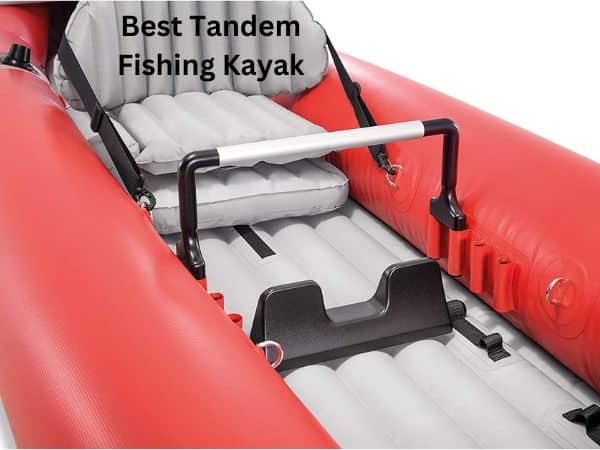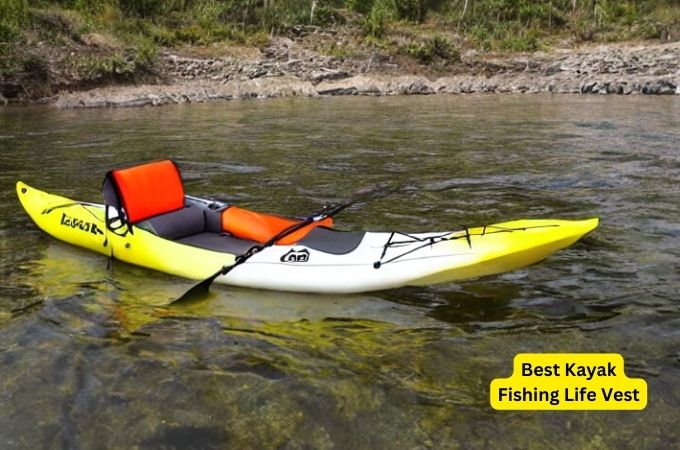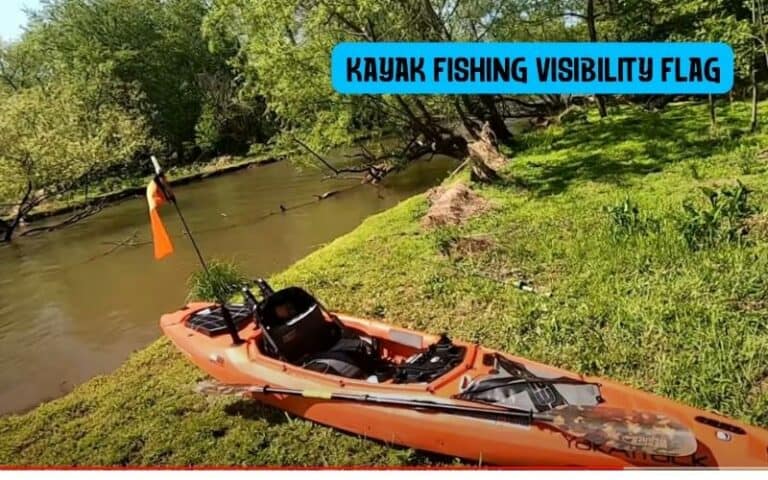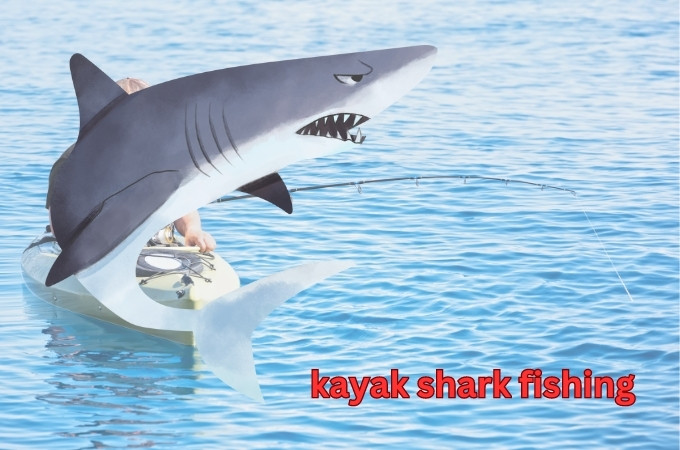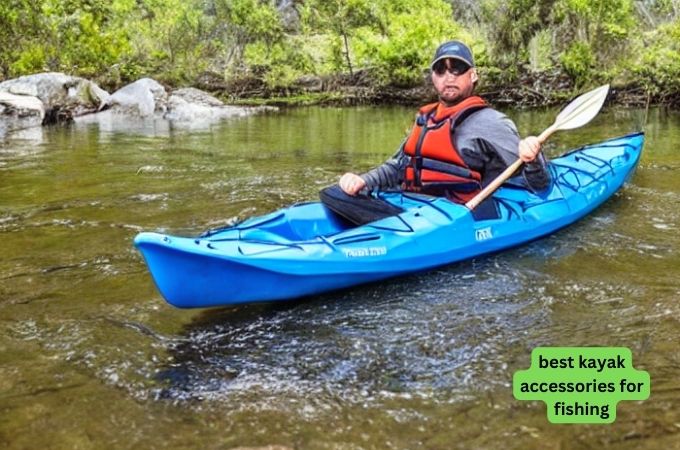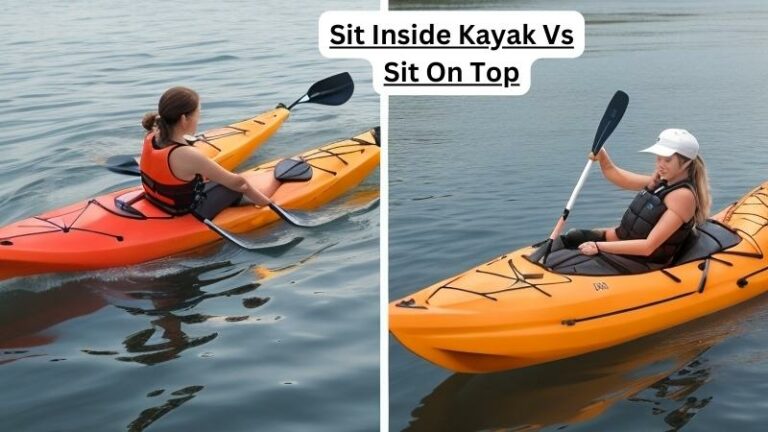How to Attach an Anchor to a Kayak | A How-to Guide
Today we know How to Attach an Anchor to a Kayak. Sometimes continuous paddling may make you tired. Perhaps you need some rest or need to go fishing. Then anchoring might be an excellent option for you.
As there are plenty of options, sometimes attaching anchor becomes pretty much confusing. You may follow some professional guidelines of the anchor trolley system to hold your comfortable and secure position on the water surface.
If you are wondering, how will you manage to do this critical task? Then we are here for your convenience. After thoroughly testing, we have made a complete handbook for learning how to attach an anchor to a kayak. We have gathered effective instructions from the experts to make your anchoring safe and sound. So, it would be best if you considered a glance at our following guide.
The Equipment You Will Need
If you want to DIY your trolley, then you will need to buy some products. Firstly, grab 50/52 feet of para-cord or marine rope from any tools store. Secondly, buy two pulleys and make sure that they come with an eyes pad. It will help to rotate them properly. Lastly, you will need a duty split ring, which is heavy enough to anchoring. You may find them in any store.
Enjoy the freedom of kayaking with an easy-to-attach anchor! Depending on your vessel and its pre-installed features, you can securely attach your anchor to a cleat or D-ring in just minutes. If these aren’t available, fear not – install them yourself for extra peace of mind during those summer paddles.
But making your anchor trolley is sometimes a hard job to perform appropriately. In this case, you can buy a trolley kit from any local hardware store. They are available at a very reasonable price. Alternatively, you can find them from amazon as well. Usually, this kit comes with a float, 25/30 feet of line, and an actual anchor with three to four pounds of weight.
Buying Guide For Anchor Trolley Kit
An anchor trolley is nothing but a rope with a pulley system to attach the anchor line for positioning the kayak. For your betterment, we have made a short buying guide for the best trolley kit.
- There are various options with sleek designs out there – For example, grapnel, deadweight, and mushroom. You can easily find your superior design.
- It would help if you focused on the scope of the anchor. Scope mainly refers to how much chain or rope you will need. Remember, the rope might be neither too short or too long.
- Before buying any trolley kit, check the anchor point first that if there is a changeable anchor point has or not because the availability of changing anchor points allows you to change your desired direction as well.
- Last but not least, check the storage capacity of the kit. It is very important when you go out for travel; then all the tools should be organized in a waterproof internal space.
The Entire Attaching Process (Step by Step Guideline)
Step 1- Making Loop
Firstly, form a loop with 7/8 meters of 3mm less stretching rope from the stern to bow of the trolley. Do it back again. You will also need some deck loops as well to attach. Then attach the trolley with the deck loops. Now hold the loop and bring it through the ring of your trolley.
Step 2- Finding Point
Now try to find a suitable point for attaching. It can be either deck fitting or jam cleat. You can connect it in the handle and lock it in that place. Different boats have different points. For example, in wilderness boats, you will find it just right there of the small bungee handle.
Step 3- Running the Trolley
Now it is time for the most straightforward job. All you need to do is that running your trolley to the place where your kayak will pivot from. After that, you will get a tight and tidy connection. You need to run it at the end of another pulley. If you want that your anchor line is not crossing other, you will need to split the ring in the below side. Lastly, attach the loose side to the ring and tie it tightly enough. If there are extra running paracord, then trim them. Otherwise, it will create a clumsy area.
Step 4- Retrieving the Anchor
After dumping your anchor perfectly, you will need to retrieve it. For doing this, you will need to paddle it past and scoop your buoy with your paddle. Furthermore, try to bring your line up as well. Then try to grab it with your mouth or another hand, if it is free. After that, keep paddling forward until you give enough slack and keep running through the ring for further connecting.
Some Crucial Tips to Follow
- Never forget to wear a life jacket before sailing your kayak because your life is more important than kayaking.
- Kayaks are mainly for riding in the current. So, if you want to save your boat from capsizing, you have to avoid anchoring the kayak on the side.
- Always try to have a small anchor that will be easy to carry and also will save space.
- Attaching a foam-flat might be an excellent procedure for retrieving the anchor easily. You have to attach the foam to another end of the line.
- Try to use sufficient anchors according to the depth of the water.
- Having a durable anchor trolley is a worthy investment if you go for kayaking regularly. So, it is suggested to have a sturdy anchor trolley.
- When you will do fishing between the submerged tress then you can also use a lengthy rope for tying it up with any branches of the tree. It will help you to have a preferred position for your kayak.
Warnings
- Never paddle up to grab buoy.
- Always try to put the anchor beneath the slack.
- It is strictly forbidden to avoid resetting the anchor under pressure. Otherwise, it may occur in dangerous incidents.
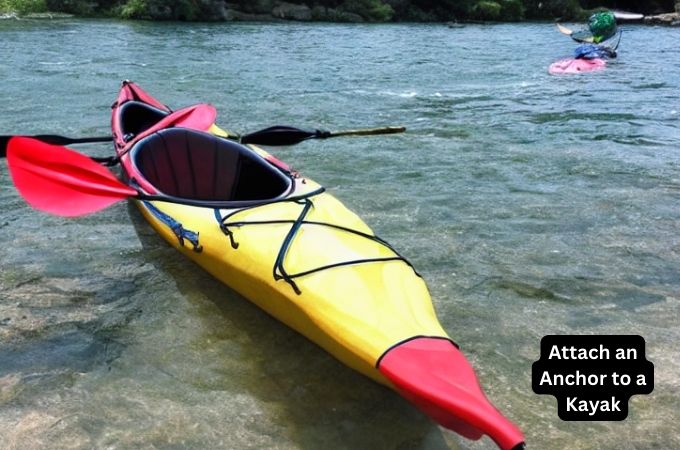
Conclusion:
All the above instructions are applicable for attaching the anchor to a kayak properly. There is no need to put much effort into getting this job done.
So, we hope that the given guideline will be effective enough to direct you to attach an anchor to your kayak precisely. So, how to attach an anchor to a kayak is no longer a headache. All you need to do is that, to be well prepared with all the safety equipment. And don’t forget to check the quality of the anchor trolley before using it.
